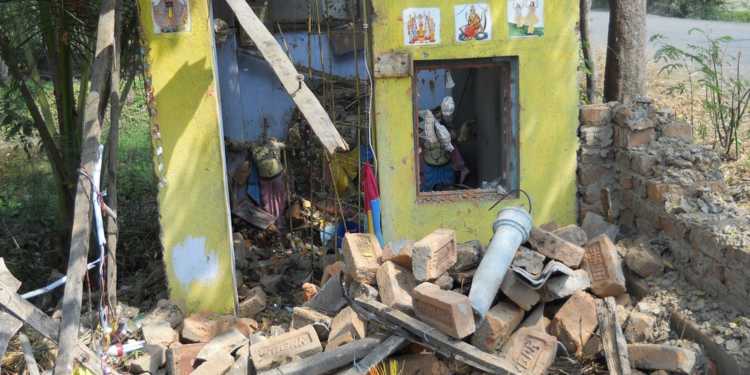In this series, we are discussing some of the deadliest riots against the Hindus in India and the relative silence following such communal incidents in the political spectrum and the media houses stemming out of a desperate attempt to appease the so called weak minorities of the Nation. In the previous two parts, we have discussed the Kashmir ethnic cleansing and the Moradabad riots 1980.
In this article, we move on to the next Kashmir in making, West Bengal which under the Mamata administration has become a hotbed of Muslim appeasement and state sponsored fundamentalism. The State has seen a number of riots aimed against the Hindus in the State in the recent past followed by State apathy which instead of eliminating lawlessness and restoring/ compensating the Hindu victims has chosen to illogically and baselessly put the blame on the BJP-RSS and the like.
Every such riot has been a witness of the Islamization policy of the Bengal Government. Those who speak up against it have been oppressed mercilessly by the State Government and the State administration is adamant on projecting the perpetrators as the real victims.
We would be discussing the Canning riots of 2013 in this segment which led to displacement of several Hindu families and a demolition of two hundred houses apart from a brazen assault of some Police Officers by a communally indoctrinated crowd.
Background of Canning riots:
The communal riots were ignited by the alleged homicide of an Imam on 19th February 2013 at midnight in Naliakhali village which falls under the executive jurisdiction of the Canning Police Station after he was returning from a religious function at Jamtala in Jaynagar. The Imam was robbed and shot by a gang which proved fatal. The Imam was carrying Rs. 11,50,000/- in cash which was looted by the gunmen. Even before the reasons and identity of the assailants was ascertained a crowd of communally enraged Muslims gathered around the mortal remains of the Imam.
Impending violence:
The crowd blocked the road as a part of the protest against Imam’s alleged murder and a junior police officer along with two Constables who were sent to recover the Imam’s dead body were brutally assaulted by the fanatical crowd.
Soon, rumours started flying around that the murders of the Imam were from the village of Naliakhali. Thousands of communally motivated people started to flock towards the site of the attack from neighbouring areas of Canning, Jibantala, Sarengabad, Jhorormore, Narayanpur and Dhoaghata. The matters started to heat up when the crowds refused to allow the Police officers to take away the remains of the cleric.
The mob mercilessly targeted the Police Officers who made attempts to take away the body of the deceased Imam and ensure that the law takes its natural course. As a result of mob violence more than half a dozen Policemen were brutally injured and the situations soon went out of control as far as the local Police is concerned. Meanwhile, the mobs went on to build up into a formidable communal force ready to destruct and displace the Hindus in vicinity who through no fault of theirs became a source of revenge for an offence committed by some unknown goons.
The neighbours of the deceased Imam were also transported to the site of violence and a school Principal further instigated the mobs to turn violent and ransack the houses of innocent Hindus living in the Naliakhali. According to the villagers who were victims of the communal tensions, mobs arrived on trucks and vans with the aim of avenging the death of a cleric by punishing those who were not even guilty in face of Police and State inaction. Soon, an armed mob of thousands went on a mad spree and used arson as a means of ransacking the residences of innocent citizens. Several houses were reduced to ashes. The rioters used petrol bombs to spread violence in the region. The violence was not confined to the village of Naliakhali alone and spread to other villages and even Kultali and Joyanagar Police jurisdictions displacing more than ninety families.
Conclusion:
The current series of articles describing some of the highly under reported riots against the peculiarly weak majority community have a common link, viz. State inaction as far as restoring/ compensating the victims is concerned and no signs of justice even as the lifespan of both the perpetrators and the victims sees a natural end.
But most importantly this article bears testimony to the sorry state of West Bengal where a particular community boasts of the right to take offence over anything and everything because and go hammer and tongs after a community towards which it harbours deep hatred for that community knows that the State is bound not to take action against them out of political considerations and the desperation to appease the very same community.


































